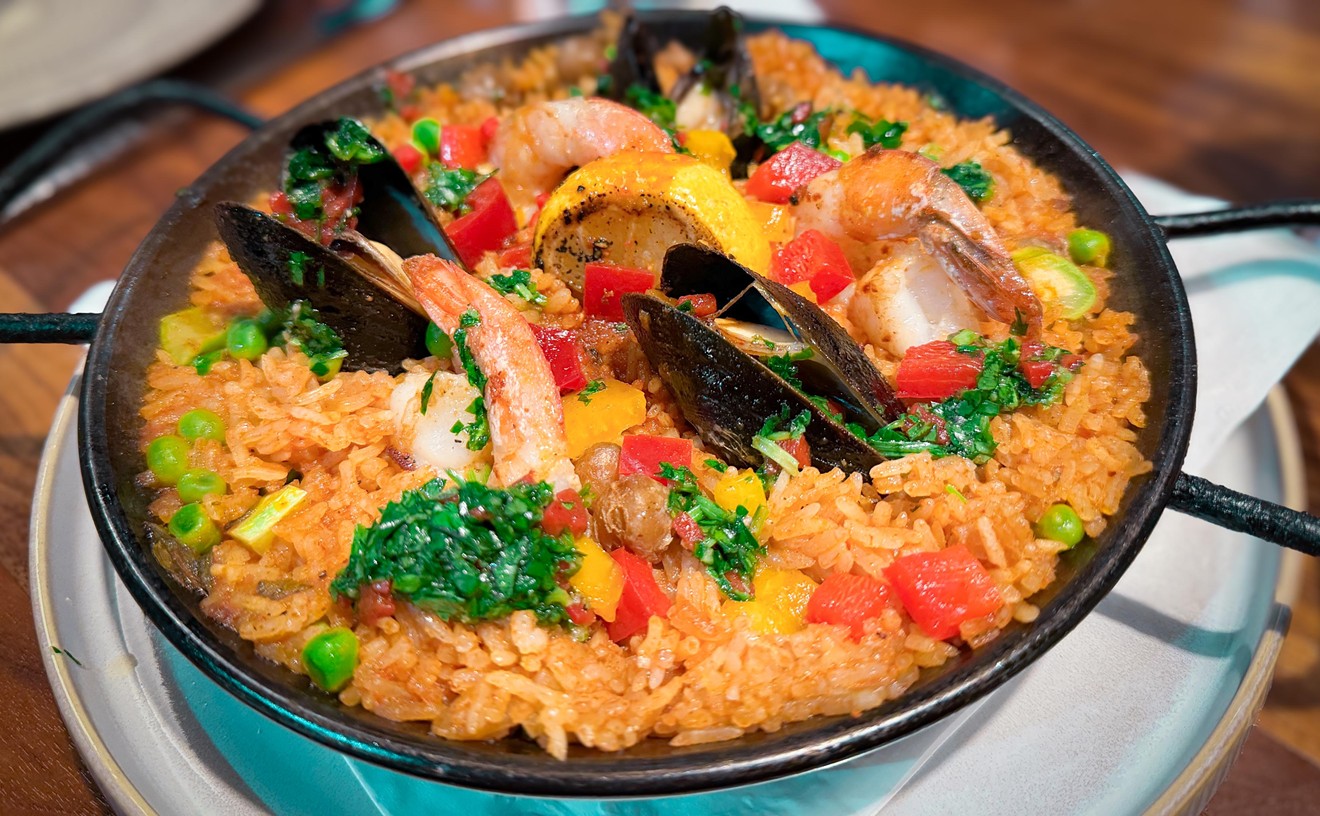The fickle 500 are the liberals of nightlife: It's easier to blame them than fess up to your own inadequacies.
Naturally, we wondered if the same phenomenon applies to food service. Is there a restaurant version of the capricious set?
Yes and no, say local restaurateurs. "There's certainly a group of people who have to go to new restaurants," notes Hector Garcia, owner of Hector's, a new and quite popular site on Henderson Avenue. "I think it's a see-and-be-seen thing." Other newcomers echo his observations, suspecting that first-wave visitors care more for the scene than the menu itself.
"When you first open it's not all about the food," agrees Daniel Regan, chef at Cretia's.
But the dynamics of a restaurant crowd differ from the barhopping set. Every club pours pretty much the same liquor, trading instead on more ephemeral qualities: atmosphere, vibe, the crowd itself. Sure, the initial surge lends a false sense of security to a new restaurant as well. And places dedicated to trendy cuisine suffer once consumer preferences shift to something new. One key difference between the experience of nightclubs pulling in the pretty people and restaurants featuring a solid concept and strong kitchen staff but drawing the same crowd: service and food.
"People like to go out and be seen at new places," Regan continues. "But once they find out the food is great, you get return customers."
Presumably, anyway. Some highly regarded places, such as Chris Svalesen's late seafood destination Thirty-Six Degrees, never establish a following. Yet success in the restaurant industry is more a function of decent food and personal commitment than hipness.
"You have to be persistent," says Joseph Gutierriz, chef-owner of Rouge and Tutto. "Good service, good food--in Dallas it takes a whole year to build a clientele."
A real clientele, that is. While nightclub managers strive to attract a crowd quickly, experienced restaurateurs shrug off the early numbers and expect a struggle. "Nobody's intrinsically fickle," points out Tristan Simon, owner of red-hot venues Hibiscus and Fireside Pies, along with the more established Cuba Libre. "What people want is substance. With substance, they'll form a long-term relationship."
Simon actually welcomes the see-and-be-seen crowd, figuring his staff has the wiles to maintain their interest. "Their needs are transparent," he says, "and we're in the business of meeting needs." Others, such as steak house fixture Al Biernat, target a more dependable audience. He walked us around (well, helped prop us up, actually; we had visited the bar first) Al Biernat's, his Oak Lawn restaurant, pointing out regulars and ticking off important details about each--birthdays, family members and such. "You want serious people who eat out all the time," he counters. "The foodie crowd, they come and go.
"I don't dislike them," he concedes, "but they're not loyal."
Perhaps it's more a matter of semantics. Bar owners seem to bank either on trendy or casual, and people merely find the largest crowd, depending on their category of choice. Trendy places suffer more from the supposedly fickle nature of barhoppers. Diners, on the other hand, will always bounce around, trying new things. "I'd probably replace 'loyalty' with 'fans,'" says Gilbert Garza, chef-owner of Suze. "There are fans of certain restaurants." And while these fans may stray from Abacus, Sevy's, Houston's or wherever, they always return for a fix once in a while.
"Loyalty suggests permanence," Garza continues.
There's one other critical difference. Nightlife writers in Dallas--the lowly Burning Question crew and our brilliant rival, Mr. Dallas from The Dallas Morning News--cover grand openings only on occasion. We carry very little weight, mostly wandering around town consuming enormous quantities of alcohol while slurring our way through interviews (although that's not how we describe our efforts when called in to our editors' offices). Restaurants, however, must deal with widely read and very talented food critics: Dotty Griffith from The Dallas Morning News, Nancy Nichols of D magazine, radio personality Jim White and our own Mark Stuertz. A review by one of these, or even a blurb on D's FrontBurner, sparks that initial feeding frenzy more than any other factor.
Last year, for instance, Griffith praised Vermillion, a Cajun spot at Knox and Central. "That review came out Friday, October 8," recalls owner Pat Uchachote (not that he considers a review important or anything). "We were packed for the whole month after that."
The dining fickle 500 contains a few leading-edge sorts, who drop by when a place first opens, and a larger mass waiting for direction from reviewers. Hard-core gourmands share information via online sites such as eGullet. Oftentimes the more trendy among them return after a critic prints something, just to double-check their observations against a professional opinion. "You get that big buzz," Regan says of critics and the corresponding crowds. "It probably does good for a restaurant because everybody talks about it."
"We certainly benefit by that," adds Garza, who received positive reviews and a few mentions in national publications. "There are curiosity seekers, and some come back."
And that's how restaurants build a crowd. Not through an initial rush, but over time as the so-called fickle 500 spread the word and eventually return.
So are dining crowds just a bunch of vacillating bastards? Nope, guess not.
Now, excuse us. We're heading back to the bar.










